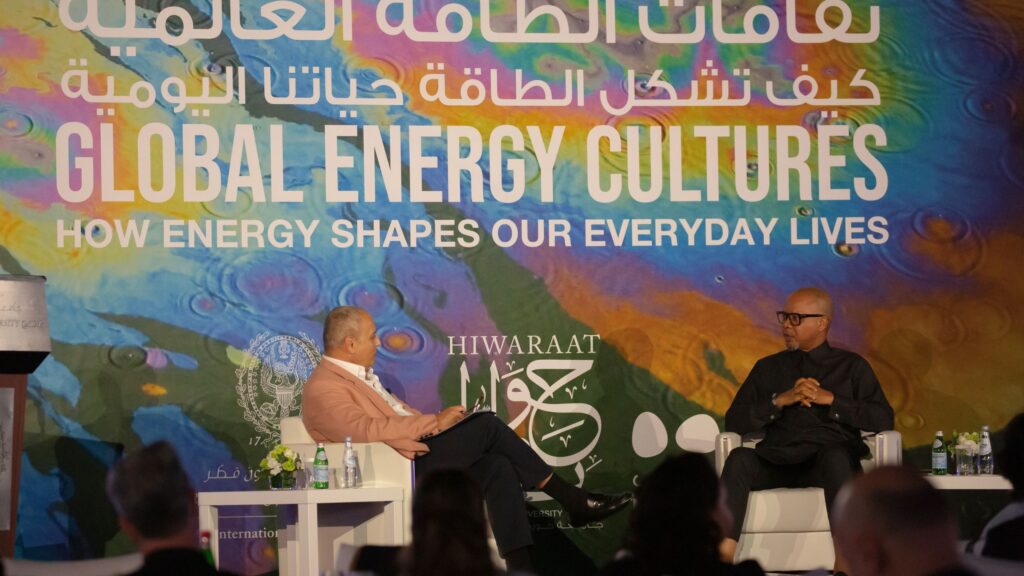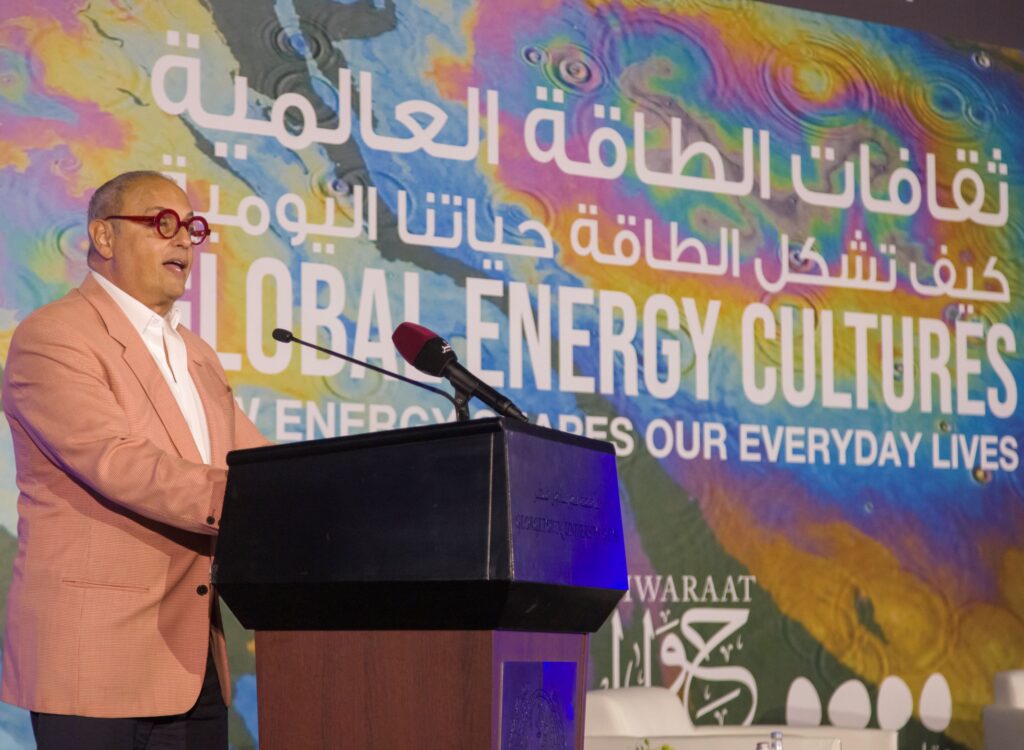Global Energy Cultures Forum Illuminates Intersections of Art, Academia, and Social Dynamics

The interconnections between energy, culture, and society in the pursuit of equity and sustainability was one of the themes on the first day of Georgetown University in Qatar (GU-Q)’s engaging public forum on “Global Energy Cultures” being held in collaboration with Msheireb Museums.
Experts and scholars, artists and filmmakers, are exploring how diverse cultural practices and energy, its consumption, production, and distribution, intertwine with everyday life all around the world, from the Global South to the Global North.
“Energy is the essence of every aspect of life: science, technology, communications, economy. Its significance goes beyond the physical and extends to culture and society. It guides our understanding of the world and binds human communities while driving collaboration as well as conflict. This edition of the GU-Q’s Hiwaraat series takes energy in all its representations as its main theme, proposing to reflect on the profound, manifold meanings of energy and our changing relationships with it as we strive for equity and sustainability,” said Dr. Safwan Masri, dean of GU-Q.

Keynote speaker, Victor Ehikhamenor, a prolific Nigerian-American visual artist and GU-Q’s first Artist-in-Residence, created an original artwork for the forum titled For Those Who Slept in the Dark with Identifiable Ghosts.

Explaining the impact of current events on the artwork, he said: “When we planned this residency months ago, nobody knew there would be these multiple wars being fought around the world. Here were are now, having this conversation about energy but somewhere in the world, there are people who no longer have a roof over their heads or ground to stand on. And some of these abnormal realities began to inform where the work took me and shifted my initial theme and perspective. It’s more about humanity now.”
“We humans, whatever we touch, we exchange energy in them. From that perspective, what is the intersection between energy and culture? There’s one thing that ties all of us together is that energy is necessary, and it’s not something we can ignore, whether human energy or electrical energy or any other form,” Ehikhamenor said, adding, “We need to begin to embrace peace as much as possible. In the same way, people who believe in war are very vigorous in their advocacy for war, we need the same level of energy to ask for peace.”
Academic sessions ranged from discussions on household energy use to the spatial dynamics of energy. “Youth Voices for Sustainable Futures” amplified perspectives from the next generation.
Adding to the conference’s diverse lineup, a session titled “Heritage Spaces and Energy Futures” explored the dynamic interplay between heritage spaces and the unfolding energy future. Chaired by Nouf Al-Thani, GU-Q, the panel featured insightful contributions from Dr. Hafiz Ali Abdulla, Msheireb Properties, Dr. Hiroki Shin, Vice-Chancellor’s Fellow, Queen’s University Belfast, and Astrid Kensinger, Chair and Associate Professor of Graphic Design, VCUarts Qatar.
Sharing lessons on linking heritage conservation and energy conservation, Dr. Hafiz said: “Msheireb Downtown Doha was designed to exist in harmony with the local environment. It uses technology, old and new, to achieve maximum comfort with minimum energy use, reduce reliance on cars, reverse hi-rise trends in line with the region’s traditional architectural practices, minimizing heat gains and harnessing the natural forces of the sun and wind, while protecting the natural habitat and plants native to the region. We used this traditional wisdom in combination with modern technology to create a model for what the city of the future should be.” He added: “Economic and urban development and demographic growth have changed Qatar dramatically over the last fifty years. However, we cannot move into the future without honoring, preserving, and celebrating the traditions of the past.”
The public conference continued with session titled “Decolonizing Energy: Palestine and Beyond” with Dr. Muna Dajani, London School of Economics and Political Science, and Dr. Mazin Qumsiyeh, founder and director of the Palestine Natural History Museum. Other sessions included “Artist Talk: Conversation with Omar El Akkad” and a dialogue with practitioners on “Architecture and Energy”.
It concluded with a unique music performance by Daniel Crawford, scientist and artist, the University of Alaska, and the Doha String Quartet, a member of the Qatar Philharmonic Orchestra. The music is composed using scientific data from the U.S. National Aeronautics and Space Administration (NASA), Goddard Institute for Space Studies’ Surface Temperature Analysis (GISTEMP v4), which is an estimate of global surface temperature change.